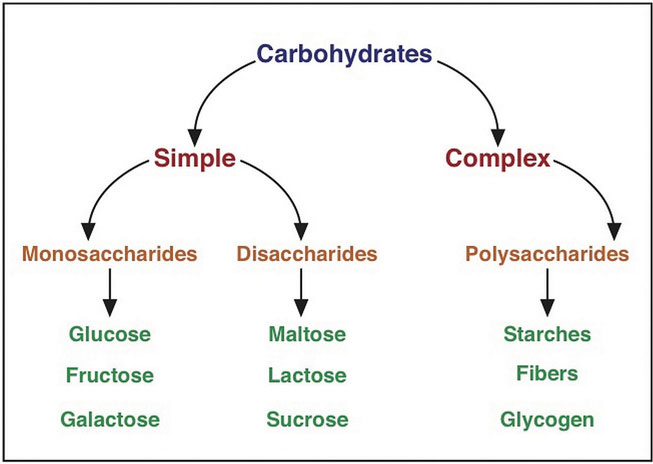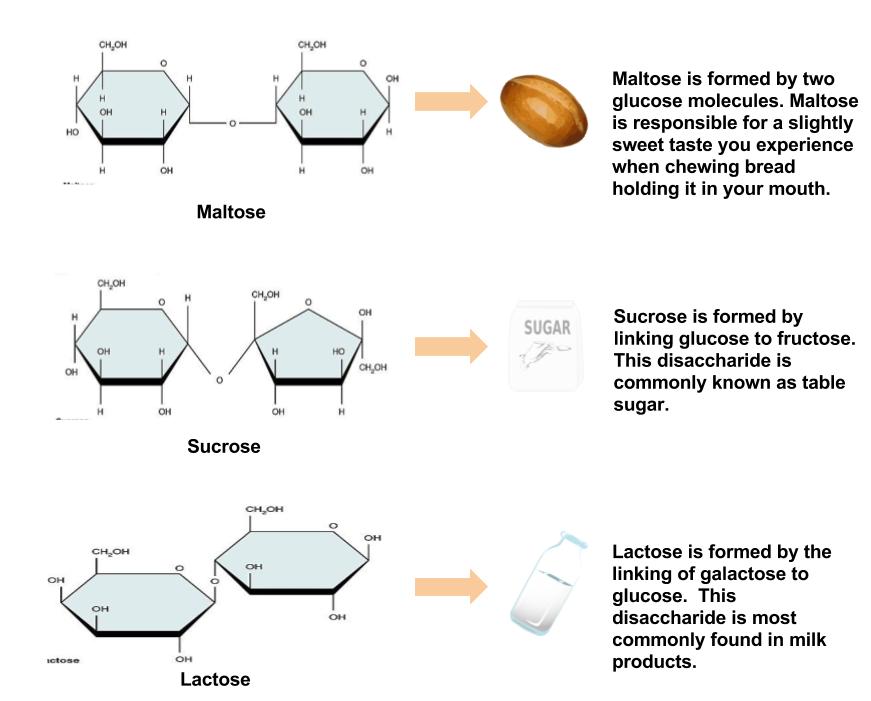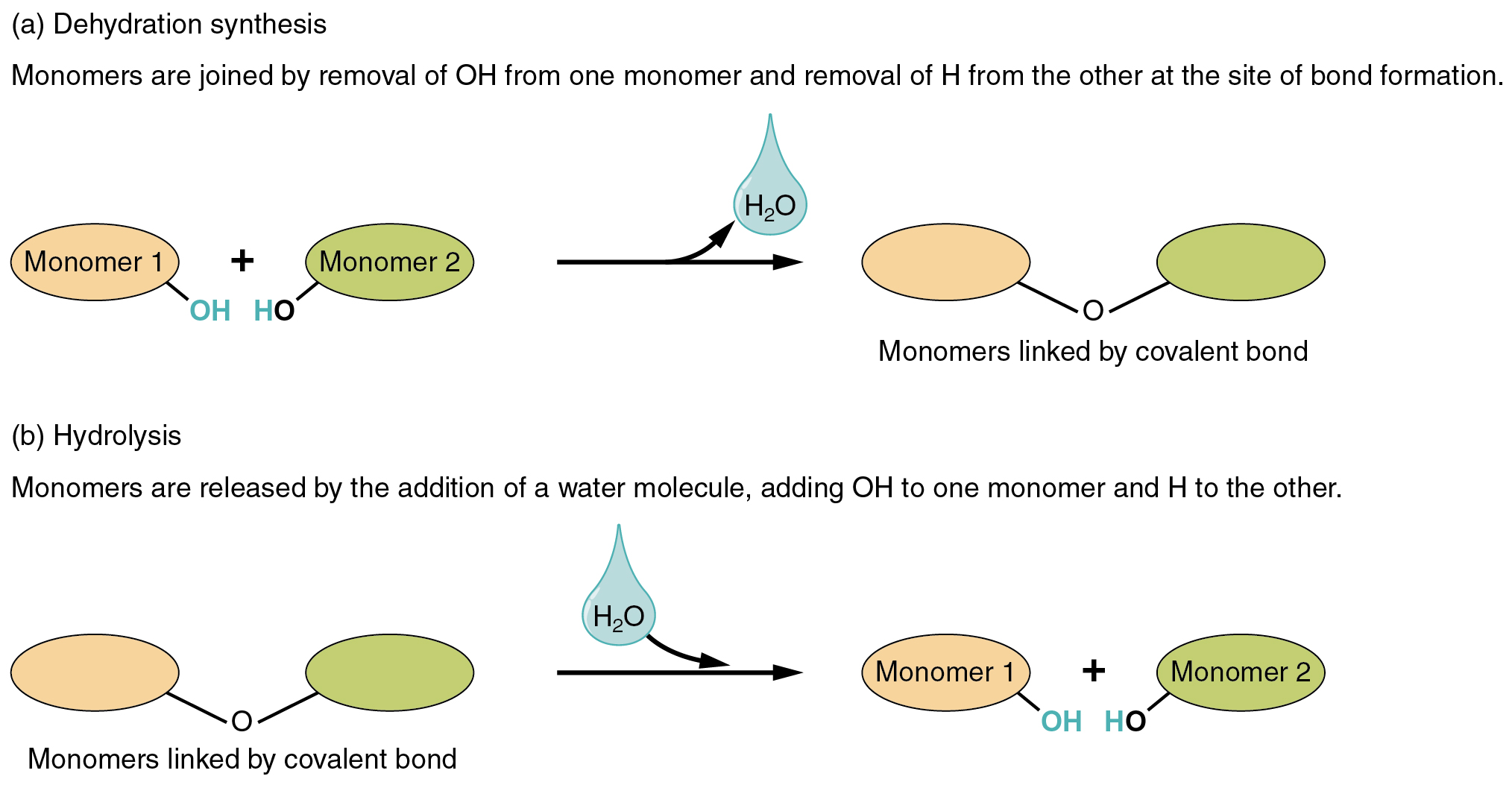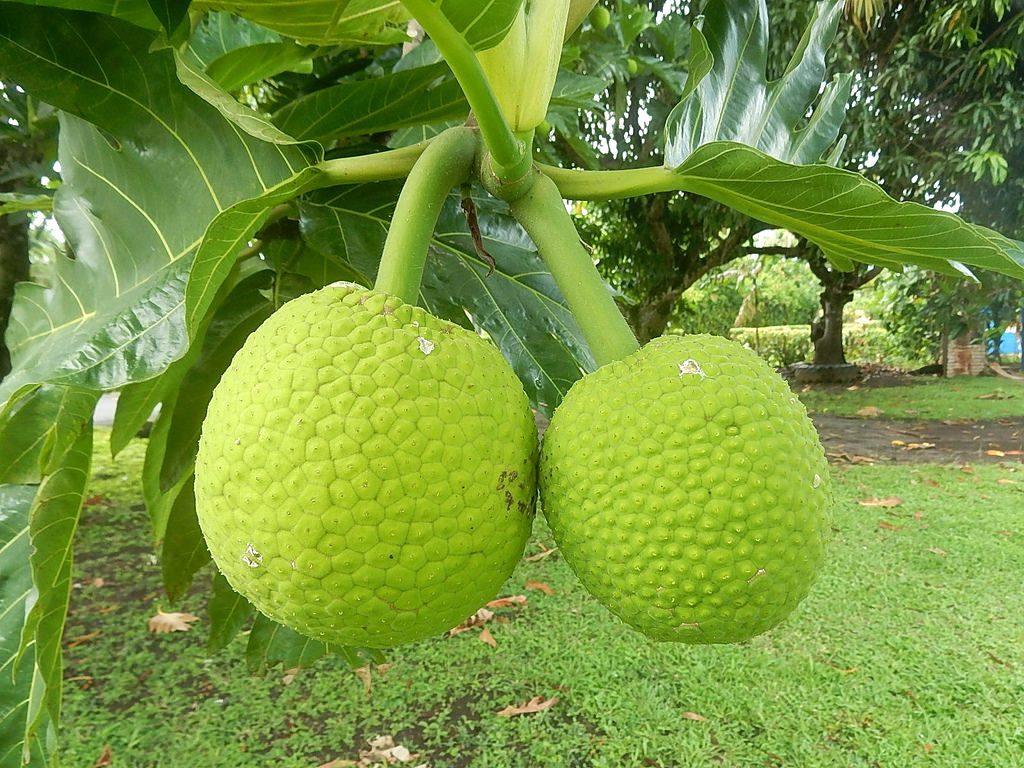Chapter 4. Carbohydrates
Introduction
Learning Objectives
By the end of this chapter, you will be able to:
- Describe the different types of simple and complex carbohydrates.
- Compare soluble and insoluble fibre.
- Describe the process of carbohydrate digestion and absorption.
- Describe the functions and sources of carbohydrates in the body.
-
Summarize the recommended intake of carbohydrates
- Describe how personal choices surrounding carbohydrates can lead to health benefits or consequences.
Throughout history, carbohydrates have been and continue to be a major source of people’s diets worldwide. Carbohydrates are the perfect nutrient to meet your body’s nutritional needs. They nourish your brain and nervous system, provide energy to all your cells when they are within proper caloric limits, and help keep your body fit and lean. Specifically, digestible carbohydrates provide bulk in foods, vitamins, and minerals, while indigestible carbohydrates provide a good amount of fibre with a host of other health benefits.
Plants synthesize the fast-releasing carbohydrate, glucose, from carbon dioxide in the air and water, and by harnessing the sun’s energy. Recall that plants convert the energy in sunlight to chemical energy in the molecule glucose. Plants use glucose to make other larger, more slow-releasing carbohydrates. When we eat plants, we harvest the energy of glucose to support life’s processes. Fruits, vegetables, and grains, including traditional Indigenous crops like wild rice and maize, are great sources of carbohydrates that have sustained Indigenous communities for generations.

Carbohydrates are broken down into subgroups: simple and complex carbohydrates. These subgroups are further categorized into mono-, di-, and polysaccharides.
Carbohydrates are a group of organic compounds containing a ratio of one carbon atom to two hydrogen atoms to one oxygen atom. They are basically hydrated carbons. The word “carbo” means carbon and “hydrate” means water. Glucose, the most abundant carbohydrate in the human body, has six carbon atoms, twelve hydrogen atoms, and six oxygen atoms. The chemical formula for glucose is written as C6H12O6. Synonymous with the term carbohydrate is the Greek word “saccharide,” which means sugar. The simplest unit of a carbohydrate is a monosaccharide. Carbohydrates are broadly classified into two subgroups, simple (“fast-releasing”) and complex (“slow-releasing”). Simple carbohydrates are further grouped into monosaccharides and disaccharides. Complex carbohydrates are long chains of monosaccharides.
Simple/Fast-Releasing Carbohydrates
Simple carbohydrates are also known more simply as “sugars” and are grouped as either monosaccharides or disaccharides. Monosaccharides include glucose, fructose, and galactose, and disaccharides include lactose, maltose, and sucrose.
Simple carbohydrates stimulate the sweet taste sensation, which is the most sensitive of all taste sensations. Even extremely low concentrations of sugars in foods will stimulate the sweet taste sensation. Sweetness varies between the different carbohydrate types—some are much sweeter than others. Fructose is the top naturally-occurring sugar in sweetness value.
Monosaccharides
For all organisms from bacteria to plants to animals, glucose is the preferred fuel source. Glucose is the preferred source of energy for the brain, except during conditions of extreme starvation. The monosaccharide, galactose, differs from glucose only in that a hydroxyl (−OH) group faces in a different direction on the number four carbon (Figure 4.2 “Structures of the three most common monosaccharides: glucose, galactose, and fructose”). This small structural alteration causes galactose to be less stable than glucose. As a result, the liver rapidly converts it to glucose. Most absorbed galactose is utilized for energy production in cells after its conversion into glucose. Galactose is one of two simple sugars that are bound together to make up the sugar found in milk. It is later freed during the digestion process.
Fructose also has the same chemical formula as glucose but differs in its chemical structure, as the ring structure contains only five carbons and not six. Fructose, in contrast to glucose, is not an energy source for other cells in the body. Mostly found in fruits, honey, and sugarcane, fructose is one of the most common and sweetest monosaccharides in nature. It is also found in soft drinks, cereals, and other products sweetened with high fructose corn syrup.

Pentoses are less common monosaccharides which have only five carbons and not six. The pentoses are abundant in the nucleic acids RNA and DNA, and also as components of fibre.
Lastly, there are sugar alcohols, which are industrially synthesized derivatives of monosaccharides. Some examples of sugar alcohols are sorbitol, xylitol, and glycerol (xylitol is similar in sweetness to table sugar). Sugar alcohols are often used in place of table sugar to sweeten foods as they are incompletely digested and absorbed, and therefore less caloric. The bacteria in your mouth oppose them, hence sugar alcohols do not cause tooth decay. Interestingly, the sensation of “coolness” that occurs when chewing gum that contains sugar alcohol comes from them dissolving in the mouth, a chemical reaction that requires heat from the inside of the mouth.
Disaccharides
Disaccharides are composed of pairs of monosaccharides linked together. Disaccharides include sucrose, lactose, and maltose. All of the disaccharides contain at least one glucose molecule.
Sucrose, which contains both glucose and fructose molecules, is otherwise known as table sugar. Sucrose is also found in many fruits and vegetables and at high concentrations in sugar beets and sugarcane, which are used to make table sugar. Because sucrose contains fructose, it is sweeter than lactose and maltose. Lactose, which is commonly known as milk sugar, is composed of one glucose unit and one galactose unit. Lactose is prevalent in dairy products such as milk, yogurt, and cheese. Maltose consists of two glucose molecules bonded together. It is a common breakdown product of plant starches and is rarely found in foods as a disaccharide.

While disaccharides like sucrose and lactose are commonly found in various foods, it is crucial to consider the health implications for different populations. Socioeconomic factors can influence the availability of nutritious options and the accessibility of nutritional education. Recognizing the potential disparities in access to healthier food choices and information about the effects of disaccharides on health is essential to addressing inequalities in nutrition and promoting healthier lifestyles for individuals across diverse communities.
How are the Disaccharides Formed or Broken?
Disaccharides are formed through condensation (or dehydration synthesis) reactions. During a condensation reaction, one of the monosaccharides will give up an atom of hydrogen and the other gives up a hydroxyl group (OH) that allows for the formation of a covalent bond and a disaccharide and water is released (H2O).
Disaccharides are broken down into their monosaccharide forms through hydrolysis. In hydrolysis, a molecule of water disrupts a compound, causing its bonds to break. Specifically, one portion of the broken molecule forms with hydrogen and the other with OH, resulting in two monosaccharides being formed.

Why can Lactose be Hard to Digest?
When two monosaccharides join to form a disaccharide, this can occur with either an alpha or beta bond. For example, sucrose and maltose are formed using an alpha bond, whereas lactose is formed using a beta bond. Alpha bonds are more easily digested, but beta bonds are difficult to digest and in some instances, may not be digestible. Some people may not have enough of the lactase enzyme required to break this beta bond, which can result in lactose intolerance. Beta bonds are also present in high-fibre foods, which means that most fibres are not digested and are excreted.
Complex/Slow-Releasing Carbohydrates
Complex carbohydrates include oligosaccharides and polysaccharides. Oligosaccharides are 3-10 monosaccharides in length and polysaccharides are long chains of monosaccharides that may or may not be branched. Two of the common oligosaccharides found in the diet are stachyose and raffinose. The primary types of polysaccharides include starches, fibres, and glycogen. Starches and fibres are found in the diet, whereas glycogen is the storage form of glucose in humans.
Starches
Starch molecules are abundantly present in grains, legumes, and root vegetables, such as potatoes. Amylose, a plant starch, is a linear chain containing hundreds of glucose units. Amylopectin, another plant starch, is a branched chain containing thousands of glucose units. These large starch molecules form crystals and are the energy-storing molecules of plants. These two starch molecules (amylose and amylopectin) are contained together in foods, but the smaller one, amylose, is less abundant. Our bodies can digest most starches containing alpha bonds but those containing beta bonds are harder to digest. Eating raw foods containing starches provides very little energy as the digestive system has a hard time breaking them down. Cooking breaks down the crystal structure of starches, making them much easier to break down in the human body. Different cultural practices have evolved to enhance the availability of energy from starchy foods. For example, in many Asian cuisines, rice is traditionally soaked and cooked in a specific manner to break down its starches, making it easier to digest. The starches that remain intact throughout digestion are called resistant starches and often contain beta bonds. Bacteria in the gut can break some of these down and may benefit gastrointestinal health. Isolated and modified starches are used widely in the food industry and during cooking as food thickeners.

Glycogen
Humans and animals store glucose energy from starches in the form of the very large molecule, glycogen. It has many branches that allow it to break down quickly when energy is needed by cells in the body. It is predominantly found in the liver and muscle tissue in animals. When we need it, glycogen can be broken down into its glucose subunits and then used for energy.
Dietary Fibres
Dietary fibres are polysaccharides that are highly branched and cross-linked. Dietary fibre is categorized as either soluble or insoluble. Soluble fibres dissolve in water and can form gels. These gels serve to trap nutrients, such as glucose, and slow down absorption, which may be beneficial to those with diabetes. Soluble fibres are fermentable and more easily accessible to bacterial enzymes in the large intestine, where they can be broken down (or fermented). Soluble fibres are often found in beans, citrus fruits, oats, barley, rye, and berries and include pectins, gums and mucilages (e.g., inulin, pectin, and guar gum). The consumption of soluble fibre has been associated with a reduced risk of cardiovascular disease and type 2 diabetes, through reductions in cholesterol and blood glucose, respectively.
Insoluble fibres do not typically dissolve in water and are not typically fermented by bacteria in the colon. Insoluble fibres do not reduce cholesterol but can help with regular bowel movements, constipation, and diverticulosis. Cellulose, hemicelluloses, and lignins are insoluble fibres found in whole grains, seeds, legumes, fruits and vegetables (e.g., whole-grain foods, flax, cauliflower, and avocados). Cellulose is the most abundant fibre in plants, making up the cell walls and providing structure.
Another way to describe fibre is as a functional fibre. Functional fibres have been added to foods and have been shown to provide health benefits to humans. Functional fibres may be extracted from plants and purified or synthetically made. An example of a functional fibre is the psyllium-seed husk. Scientific studies show that consuming psyllium-seed husk reduces blood cholesterol levels. Total dietary fibre intake is the sum of dietary fibre (which is the structural non-digestible part of plants) and functional fibre consumed.
Some dietary fibres are pectin, gums, cellulose, hemicellulose, and lignin. Lignin, however, is not composed of carbohydrate units. Humans do not produce the enzymes that break down dietary fibre; however, bacteria in the large intestine (colon) do. Dietary fibres are very beneficial to our health. There is enough scientific evidence to support that diets high in fibre reduce the risk of obesity and diabetes, which are primary risk factors for cardiovascular disease. [1]
Fibre in Your Bread
A whole grain (and whole grain flour) contains the bran, germ, and endosperm (Figure 4.6). In contrast, whole wheat flour only contains the bran and endosperm, and white flour contains only the endosperm of the grain. The bran portion of the grain contains fibre, which means that white flour is stripped of this nutrient. Given the health benefits of fibre, where possible, consider consuming whole grains.

Media Attributions
- Condensation and hydrolysis © Open stax is licensed under a CC BY (Attribution) license
- US Department of Agriculture. Part D. Section 5: Carbohydrates. In Report of the DGAC on the Dietary Guidelines for Americans, 2010. http://www.cnpp.usda.gov/Publications/DietaryGuidelines/2010/DGAC/Report/D-5-Carbohydrates.pdf. Accessed September 30, 2011. ↵


